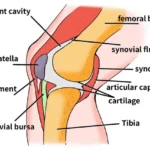Understanding Sciatica Pain During Pregnancy
The sciatic nerve, the largest nerve in the body, extends from the lower back through the thighs and down to the feet, providing sensation to these areas. If you suspect you’re experiencing sciatic pain during pregnancy, here are some tips to help ease the discomfort.
For many pregnant women, finding comfort becomes increasingly challenging as the pregnancy progresses. Back pain is a frequent complaint, but when the pain becomes sharp and excruciating, it may be due to sciatica.
Sciatica is caused by excessive pressure on the sciatic nerve, often leading to sharp, shooting pain, tingling, or numbness that radiates from the lower back down to the legs and feet.
Common Causes of Sciatica During Pregnancy
- Weight Gain and Fluid Retention: Increased body weight and fluid retention exert additional pressure on the sciatic nerve.
- Uterus Expansion: The growing uterus can compress nearby nerves.
- Lordotic Curve Stretching: The natural dip in the lower back (lordotic curve) stretches as the pregnancy progresses.
- Baby’s Positioning: As the baby shifts into the birthing position, it can press on the sciatic nerve.
These changes in the body can lead to sciatica at different stages of pregnancy. While some women may experience pain as early as the second trimester, others might only notice it in the third trimester. Unfortunately, as weight gain and fluid retention increase, the pain can worsen and may even persist after delivery.
Relief Options for Sciatica During Pregnancy
Experiencing sciatica during pregnancy can be challenging, but there are effective ways to alleviate the pain while ensuring your baby’s safety. Here are some practical tips to help manage discomfort:
- Warm Compress: Apply a warm compress to the area where the pain persists to relax the muscles and reduce discomfort.
- Sleep on Your Side: Lying or sleeping on your side can relieve pressure on the sciatic nerve.
- Use a Pillow for Support: Place a pillow between your legs while sleeping to help align your pelvis and reduce nerve
- Try Swimming: Engaging in swimming or water-based activities can provide significant relief by red
- Stretch or Practice Prenatal Yoga: Gentle stretches or prenatal yoga exercises can help ease tension and improve flexibility.
- Prenatal Massage: Consider a prenatal massage to temporarily relieve sciatic pain and relax your body.
Post-Pregnancy Sciatica Management
If sciatica pain persists long after pregnancy, it’s essential to identify the underlying cause. Other potential causes of sciatica include:
- Bulging or Herniated Disc: Pressure from displaced discs can irritate the sciatic nerve.
- Bone Spurs: Extra bone growth can compress the nerve.
- Pinched Nerves: Compression of nearby nerves can lead to pain and discomfort.
- Degenerative Disc Disease: Aging-related disc wear can contribute to sciatica.
- Spinal Stenosis: Narrowing of the spinal canal can place pressure on the sciatic nerve.
By understanding and addressing these causes, you can better manage long-term sciatic pain. Always consult a healthcare professional for personalized guidance and treatment options.





